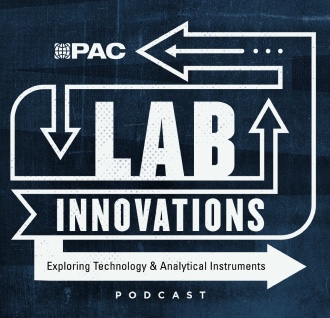May-2024
Life cycle assessment at industrial scale
Granular transparency can empower businesses with data-driven insights, unlocking a pathway towards more sustainable growth in the value chain.
Daniel Bochnitschek
AllocNow GmbH
Viewed : 3490
Article Summary
Motivated by a relentless pursuit of environmental sustainability, particularly through prominent topics of decarbonisation and defossilisation, modern businesses across industries are undergoing a significant transformation. This shift is driven by the evolving expectations of customers, investors, and regulators, who increasingly demand more responsible and sustainable practices.
While the sustainability transition is pending across all sectors, the chemical industry faces a unique challenge. Heavily reliant on fossil fuels for both energy and feedstocks, its footprint extends far beyond its own emissions. Chemical products are omnipresent, shaping everything from ingredients to infrastructure. As a critical upstream force, the industry impacts the environmental footprint of countless downstream industries, triggering a ripple effect throughout the supply chain and significantly contributing to global greenhouse gas (GHG) emissions.
However, the intricate networks of chemical value chains, involving diverse raw materials, numerous intermediate products, and multi-stage production processes across various locations, present a daunting challenge for navigating the path towards sustainability.
Each step, from the extraction and processing of raw materials to the complex chemical reactions and energy-intensive manufacturing processes, contributes to a product’s environmental footprint. Conventional cradle-to-gate life cycle assessments (LCAs), typically reliant on manual or semi-automated data gathering, struggle to capture the full scope of these complexities with the required accuracy and granularity, particularly at industrial scale. These limitations can significantly hinder genuine progress towards achieving sustainability goals.
Fortunately, the answer lies in LCAs at scale. Scaling LCAs addresses the limitations of conventional methods by delving deeper into the complexities of global value chains. By applying a more granular level of scrutiny across every intermediate and final product within a company’s portfolio based on actual data rather than on averages, this approach provides a comprehensive understanding of the true environmental footprint.
However, the power of scalability goes beyond an increase in accuracy. It must be ensured that the essential information on product environmental impacts is accessible and understandable to everyone within a company, regardless of their position or area of expertise, which is crucial for effectively embedding sustainability in business processes and decision-making. Transparency at scale fosters a culture of collaboration and accountability, encouraging everyone to play a role in driving progress towards sustainability goals.
By embracing these two key dimensions of LCAs at scale – full portfolio coverage and unlimited access to information – chemical companies can unlock a transformative pathway towards more sustainable production (see Figure 1).
This article explores these two dimensions of scalability, highlighting how transparency at scale empowers businesses with data-driven insights. Through effective scaling strategies, businesses can not only mitigate environmental risks but also capitalise on opportunities for innovation and sustainable growth, contributing to a more resilient and prosperous global ecosystem.
Dimension 1: Transparency on every product
Achieving a truly profound shift towards a sustainable future requires the chemical industry to understand the environmental impact of each product at a granular level. Unlike other global industries, such as automotive and electronics, with their sequential, one-directional product flows, the chemical industry operates quite differently. It is characterised by non-linear value chains and multi-output processes, resulting in a broadly diversified portfolio of various products and corresponding properties and extensive regional site clustering, while at the same time being linked globally.
The spectrum ranges from high-volume basic chemicals like sulphuric acid to specialty chemicals, pharmaceuticals, and highly specialised polymers. A single reaction step can often result in several products, which may already be desired sales products, starting products for subsequent reactions, or less desired byproducts. The latter is fed back to a previous process stage as recycling material, either in its original form or often via an intermediate reaction step, contributing to waste reduction and better resource preservation. This interconnectedness fosters the development of regional chemical clusters, where production plants are strategically located near one another to take advantage of shared infrastructure, streamlined logistics, and collaborative knowledge exchange. To enable access to diverse resources, adaptation to various markets, and significant cost savings, large corporations maintain production facilities worldwide. Consequently, process steps for a specific sales product can span several continents.
Given the complexity of the global chemical industry, conventional LCA methods are often unable to fully map these interdependencies. This is mainly due to the reliance on manual data gathering with spreadsheets or traditional LCA software tools, which introduces inaccuracies in the environmental impact assessment by relying mostly on simplified material flow models, assumptions, and averages. Additionally, the selection of products for LCA can be biased, often based on factors like sales volume, environmental perception, and strategic importance. As a result, critical environmental hotspots may stay unknown. Moreover, the dependence on individual experts’ discretion can lead to inconsistencies in the analysis. The requirement for third-party reviews further extends the process, making it both time-consuming and resource-intensive.
Consequently, conventional LCA methods in the chemical industry often fall short of delivering the accuracy, reliability, and transparency required to achieve significant progress towards sustainability goals (see Figure 2).
In contrast, LCAs at scale provide granular transparency on product level for each intermediate and marketed product within a company’s global portfolio across all environmental impact categories in line with prevailing industry norms and standards (TfS PCF Guideline and ISO 14040/44/67).
This involves conducting detailed analyses of every stage of the production process, from raw material extraction to final product distribution to uncover hidden environmental impacts and identify areas for improvement. This level of transparency not only enhances environmental performance but also fosters accountability and drives continuous improvement throughout the value chain.
For example, by having detailed information on product level, regional or cluster-specific differences for one and the same intermediate or sales product can be recognised. The same final product, depending on its production location, might utilise diverse feedstocks with contrasting footprints (such as recycled vs virgin materials). Additionally, regional variations in utilities supply and emissions intensity (such as renewable vs fossil fuel-based energy) can significantly influence the environmental impact. Even the dedicated production technologies employed, whether energy-efficient or conventional, play a critical role and can be recognised with scaled LCAs.
With this granular information, decisions on actions can be made on a plant-specific basis, leading to the targeted deployment of renewable energies and utilities with lower environmental impact. Such insights empower organisations to efficiently change feedstocks based on their sustainability footprint and strategically prioritise technology projects with the greatest potential for positive environmental impact. Therefore, detailed transparency on a product level becomes a prerequisite for effective business steering.
Add your rating:
Current Rating: 3

















